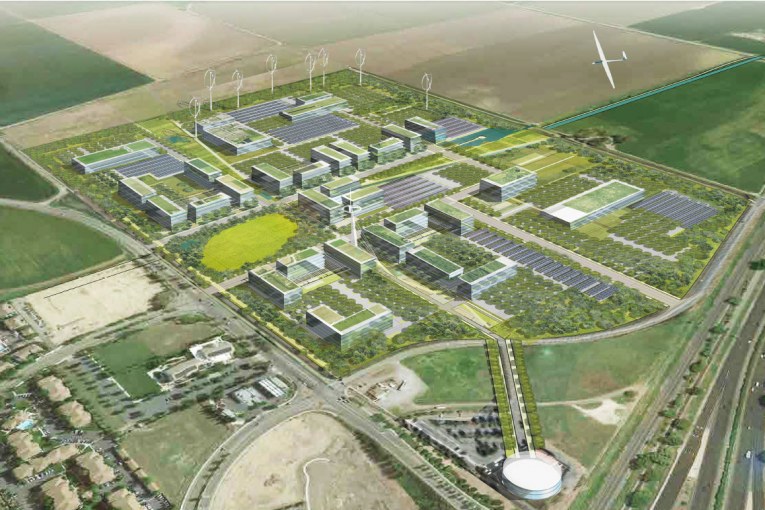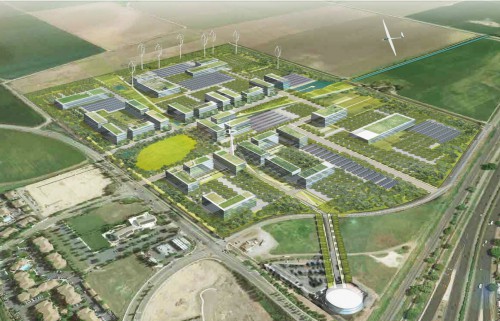
 In the last few days I have seen a wave of emails and letters calling for an additional period of environmental review for the Mace Ranch Innovation Center EIR (Environmental Impact Report). I get it, it’s a massive document and people want to have the time to comb through it to find potential sticking points and, if they don’t get that time, they will claim this thing was rushed through.
In the last few days I have seen a wave of emails and letters calling for an additional period of environmental review for the Mace Ranch Innovation Center EIR (Environmental Impact Report). I get it, it’s a massive document and people want to have the time to comb through it to find potential sticking points and, if they don’t get that time, they will claim this thing was rushed through.
While I don’t want to question the motives of those doing the asking here, a lot of the people involved are people likely to oppose any project. I would respectfully suggest they take a different approach here because, if done correctly, the innovation center at that location can be a huge advantage for those of us who wish for Davis to remain smaller, to continue to have slow growth, and to avoid huge incursions onto prime agricultural land.
Alan Hirsch in his letter notes, “This is a massive change to the city’s General Plan.” He calls the plan “a consensus that citizens invested thousands of hours to review, discuss, compromise on. Yet this hard won consensus is about to be negated in a rush fashion: Council is allowing only weeks for the only, official, legally binding process for citizen input on this massive general plan change.” Fair enough.
He warns, “Extending the analysis and comment period is particularly important as one of the projects is no longer as originally sold to council: the ‘Industrial Park’ proposed on the Mace Curve has morphed into something that will include housing.”
But let us look at this from a different angle. I would propose that the innovation park is actually perfectly situated to slow growth rather than to accelerate it. And given the leverage that exists for a Measure R vote, the citizens should not be using that leverage to slow down the EIR process 10 or 11 months prior to a public vote, but to use their leverage to get things that will improve the project and the community.
First of all, 200 acres of a tech park sounds massive. However, the proposed build out for such a site is probably 20 to 45 years. In other words, we are talking about an actual build out rate of less than 10 acres a year. That means for the next 20 to 45 years, we are likely not to have another proposed site for a tech park.
Second, because the city council proceeded in putting Mace 391 into a conservation easement, Mace 200 is basically surrounded by land that cannot be developed. As such, the development itself isn’t likely to open the door to new development, but rather close the door to other types of development in that area.
Third, I know there are people concerned about the housing proposal on Mace, but that issue, while a thorny one politically, actually cuts both ways. Build the housing as specified and you end up with housing on land that is already going to be developed, and that could be used to cut down on vehicle impacts.
But, even without housing included on the site, if leveraged properly, slow growth proponents can actually start implementing policies that would make new housing projects in Davis less necessary.
The EIR suggests that, “as a concentrated employment center, the project applicant and future tenants have a unique ability to implement programs that promote travel alternatives to the single-occupant vehicle, control the fuel types and efficiencies of vehicles accessing the site, and collectively contribute to the goal of minimizing VMT and GHG growth.”
The EIR calls for the creation of a TDM (Transportation Demand Management) program “for the entire proposed project, including any anticipated phasing, and shall submit the TDM program to the City Department of Public Works for review and approval.” This program would reduce the number of vehicle trips and reduce daily and peak house vehicle trips.
One place the city and region could look is expanding the lanes from three to four on I-80, especially from Richards Boulevard through the causeway, creating a carpool lane. But that simply deals with road capacity rather than dealing with VMT (vehicle miles traveled).
Instead, what the city, university, developers and private interests could look into is a third rail lane, as we noted yesterday. Imagine building that rail line from Sacramento into Solano County. All of a sudden, people do not have to get into their cars to commute to UC Davis or the innovation center. Instead, they can ride the rails.
That is not only a transportation boon, but it could mean that people can buy their homes in Dixon or Vacaville or Sacramento, where the price of housing is cheaper and more readily available and commute to their jobs at the university or the tech park without adding to VMT, GHG (greenhouse gas), or road congestion.
Normally such a proposal would be DOA – however, with the amount of money and the variety of interests that would be pushing this kind of tech park and the leverage of a Measure R vote, there is a deal that can be cut to put in the transportation infrastructure that could alleviate the need for the next big housing project.
It has been ten years since Covell Village failed. At some point, the city is going to put a housing proposal on the ballot and the housing market is going to be such that it passes. By implementing a tech park with a transportation plan, we alleviate the city’s revenue problem while solving the regional transportation problem, and that may be enough to reduce the need for future peripheral housing projects.
At the very least, it is something to ponder as better than asking for another 45 days to review the EIR document – when we already know full well that the biggest issues are going to center on transportation, GHG and vehicle miles traveled.
—David M. Greenwald reporting

David, you recently wrote:
and
and
But today you write:
Which is it? You seem to be all over the map on this.
Which is it? Both. I think politically housing is a problem for getting the project past. In an ideal world, I think a project with housing would be better than without. But I also believe that we can mitigate VMT/ GHG without housing – which is really where I’m going today.
If, and a big if, housing were ever included in the project it would have to be structured in a way that it led to a high percentage of business park employees living in the units. The only way I can see this happening is the corporation buildings would have to be built and occupied in order to ensure that a high percentage of those employees would opt to live in the park. If the rental units were being offered before any businesses were in place then we’re going to get a high percentage of non business park residents living there and I believe would actually increase VMT because of the distance from the downtown core area and the campus. If this is a 20 to 45 year buildout the rental units should only come online as the various occupied business buildings are in place.
For example, business building A is up and working with 400 employees.
On avg. let’s say 50% of new employees are opting to live in the park.
Then 200 units would be released to be rented.
you seem to be focused on housing, whereas the bulk of this piece is focusing on using the project in order to address the vmt/ ghg issue without adding housing and not just with this project, but using it to close the door on housing into the future.
“that means for the next 20 to 45 years, we are likely not to have another proposed site for a tech park.”
Well, it might mean that. Or it might mean that some would look to the early success in initial stages if that were to occur and use that as an argument for another “park”. Remember that there were those posters who wanted to see all three sites adopted at once in a “more the merrier” framing of the situation.
“That is not only a transportation boon, but it could mean that people can buy their homes in Dixon or Vacaville or Sacramento where the price of housing is cheaper and more readily available and commute to their jobs at the university or the tech park without adding to VMT, GHG, or road congestion”
I would also see this as a huge advantage. However, I do not seem to be as optimistic as you that this would occur. If we are going to have this emphasis on alternative transportation, I believe that it should either be built in or developed concurrently with the business park so that the transportation component cannot be neglected, deemed too expensive or impractical, or otherwise reneged upon once the business park is approved.
a few points i would suggest in response to your well-thought out post.
first, i think it’s quite probable that if this project is successful we see a new project emerge, but when will that occur? if we have the space, then this project suffices. if we need additional space, then we debate that in the next measure r vote.
second, you put the transportation agreement into the baseline features of the project – most likely its mitigation and then it’s required.
third, while i agree with you “If we are going to have this emphasis on alternative transportation, I believe that it should either be built in or developed concurrently with the business park” i think the vanguard sees this as a way to finance the alternative transportation needs we already have.
The bottom line here is one of timing. If the City Council wants the Mace Ranch Innovation Center on the June 2016 ballot, I do not believe from a practical perspective the comment period can be extended another 45 days.
Anon
“I do not believe from a practical perspective the comment period can be extended another 45 days.”
Honest if brief question. Why not ?
Briefly, because of when the arguments for the ballot measure must be submitted to the proper authorities.
“Slow Growthers” is a glaringly disingenuous label.
;>)/